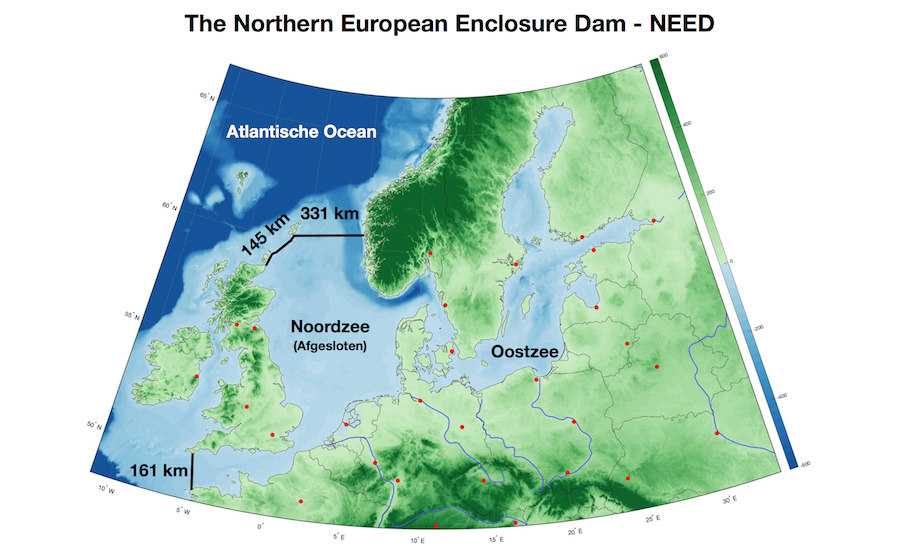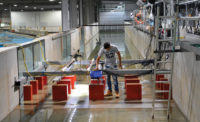A pair of huge and difficult maritime proposals in the United Kingdom would, if successful, protect millions of people from long-term rising sea levels, in one case, and in the other, connect Scotland with Northern Ireland. Whether either project will survive detailed scrutiny remains to be seen.
Costing up to $540 billion, the more ambitious dam scheme, promoted by Dutch and German research organizations, is “mainly a warning,” notes Sjoerd Groeskamp, an oceanographer at the Royal Netherlands Institute for Sea Research. The scale of investment “reveals the immensity” of the sea-level threat “hanging over our heads,” he adds.
Groeskamp and his collaborator Joakim Kjellson at Germany’s GEOMAR Helmholtz Centre for Ocean Research Kiel, propose sealing the North Sea and English Channel with dams to protect some 25 million coastal Europeans. They acknowledge environmental and economic impacts would be severe, but “the cost of doing nothing (now) against sea-level rise will ultimately be many times higher,” warns Groeskamp.
The larger, 475-km-long dam would run between the north of Scotland and Norway. Average water depths are 127 m, dropping to 321 m just off Norway, say the oceanographers. A second dam would stretch 160 km between the southwest tip of England to France, in water up to 100 m deep. “Gigantic pumps to transport all of the river water that currently flows into the North Sea to the other side of the dam,” would need to be factored in.
Potentially a more technically challenging project, now being investigated by the U.K. government, would link Scotland and Northern Ireland via a highway bridge. Proposed by Prime Minister Boris Jonson, the embryonic scheme has received a cool response from politicians and engineers.
Scotland’s First Minister Nicola Sturgeon suspects the prime minster’s political motives for proposing the bridge now, and believes the idea raises “big practical questions.” To answer those “an awful lot of investigation work would… have to be done,” Gordon Masterson, professor of Future Infrastructure at Edinburgh University, told the BBC.
The shorter potential route between the two islands, at about 20 km, would be between Mull of Kintyre, Scotland, and the Antrim coast. But that would involve a three and half hour drive from Glasgow and require building a major highway across the environmentally sensitive Mull.
A 50-km route likely to attract less opposition would cross the sea between Portpatrick, Scotland, and a point north of Belfast. But as well as contending with rough seas and heavy shipping traffic, the the structure would cross the 3.5-km-wide, 300-m deep Beaufort's Dyke, which contains large amounts of munitions dumped by the government after the two world wars, according to the Scottish government’s Fisheries Research Service.
Despite these challenges, “there are always solutions (but) at a price,” says Masterson. Though costs of up to $26 billion have been floated, any estimates made now are be highly tentative, he adds. But potentially costing 15 times more than Edinburg’s 2.1-km-long Queensferry cable-stayed bridge, Scotland’s largest infrastructure project, could the crossing pass any benefit cost analysis, he wonders.





Post a comment to this article
Report Abusive Comment